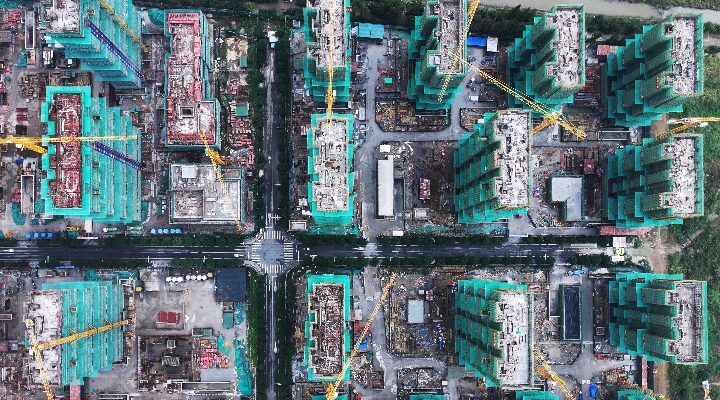Based on the latest data from the National Bureau of Statistics year-through-October real estate investment was up 2% year on year, the slowest rate since February 2009. Investment in residential buildings, accounting for two thirds of the real estate investment, was up 1.3% year on year. Similarly, gross floor area under construction was up 2.3% year on year, with residential gross floor area under construction up slightly by 0.2% year on year. The continuing slowdown in real estate investment was more evident for leading indicators.
Gross floor area starts were down 13.9% year on year, and land sales were down 33.8% year on year by volume and 25.2% by value. Given the magnitude of the slowdown, we expect the weakness in construction and real estate investment to remain well into 2016.

On the other hand, the physical market, supported by a series of government measures, has picked up since the beginning of the year. Government policy loosening is expanding the scope of first-time homebuyers, as well as lowering requirements for mortgage down payments. As a result, sales of commercial builds were up 7.2% by gross floor area and 14.9% by value year on year, while sales of residential commercial buildings were up 7.9% by gross floor area and 18% by value year on year.
The residential average selling price, or average selling price, appears to have bottomed sometime during first-half 2015. The destocking process is continuing apace, with residential buildings for sale decreasing by 12 million square metres, compared with the year-ago period. Historically, an uptick in the physical market has resulted in the subsequent uptick of real estate investment. With sustained contracted sales growth and average selling price increases, developers are normally more willing to replenish their land banks. This was seen during the previous cycles in 2008 and 2012.
The current cycle, however, seems to be more depressed and of longer duration. The magnitude of the decline in land purchase and gross floor area starts signifies developers’ continued pessimism. Hence, we believe that developers will remain cautious and will hold off on real estate investment for the time being, instead waiting for the physical market to show further stabilisation and for inventory clearing to take place.
Leading Developers Offer Better Investment Potential
Despite our forecast for a prolonged lower level of activity in the real estate sector, we continue to see value in the large listed developers, and we believe that they will weather the storm. The Chinese real estate market is currently extremely fragmented, with the top 10 developers having a market share of 10% by gross floor area. Given their superior access to financing, large balance sheet, and upper-tier city focus, we expect the top developers to benefit from an ongoing industry consolidation by taking market share from smaller developers.
A tougher competitive environment will accelerate the exit of weaker player and hasten the consolidation process. Potential risks may include a significant slowdown in the Chinese real estate sector, resulting in falling prices. Currency risk is also a concern, as many large developers have unhedged positions in Hong Kong dollar-denominated and US-dollar-denominated liabilities. Their earnings will be negatively affected, should the renminbi depreciate further in the near term.





























